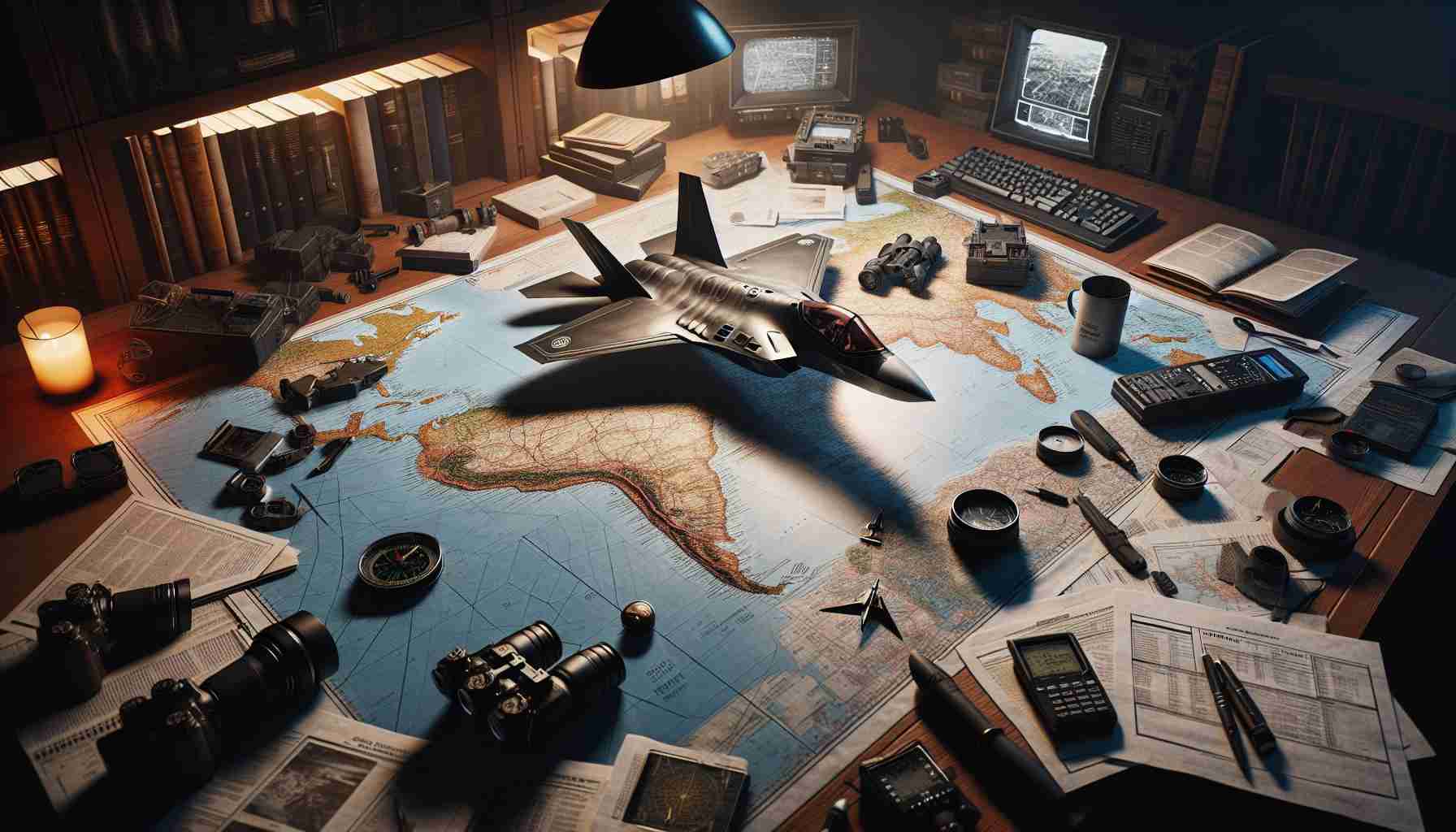In recent weeks, the aviation community has been abuzz with discussions surrounding the disappearance of a U.S. military F-35 Lightning II fighter jet. This incident spotlighted the challenges associated with advanced technology in military aviation and has prompted renewed interest in how such aircraft are tracked and recovered when they go missing.
On September 17, 2023, an F-35B, the variant capable of vertical takeoff and landing, went missing during a training flight near Charleston, South Carolina. The pilot successfully ejected from the aircraft, but the subsequent search for the plane raised numerous questions. Despite efforts from various military and civilian agencies, the search initially yielded no results, which sparked considerable concern regarding the aircraft’s technology and operational protocols.
The F-35 Lightning II is equipped with sophisticated systems that allow it to operate in combat scenarios, including stealth capabilities and advanced avionics. However, the situation highlighted a significant risk: the complexity of these systems can sometimes lead to operational challenges. The U.S. military’s approach to monitoring and recovering such advanced aircraft is under intense scrutiny, particularly in terms of ensuring that lost or downed assets can be located quickly.
Efforts to locate the F-35 were extensive, involving ground searches, aerial reconnaissance, and sonar equipment. The search not only involved the military but also local authorities and private contractors, demonstrating a united front in tackling the challenge. While searching large areas of land or sea presents logistical difficulties, it is critical for national security to recover lost military aircraft.
After several days of searching without finding the aircraft, a breakthrough occurred when a debris field was identified in the vicinity of the pilot’s last known flight path. This discovery was a testament to the collaborative nature of modern search operations, utilizing both technology and skilled personnel to cover vast areas effectively.
The incident surrounding the missing F-35 has reignited debates about military preparedness and technological reliance. With the increasing complexity of modern warfare, ensuring that such high-tech aircraft can be adequately monitored and recovered is more critical than ever. The U.S. Department of Defense has stated that an inquiry into the incident will address not only the recovery efforts but also the protocols in place for future operations involving advanced fighter jets.
In conclusion, while the search for the missing F-35 has revealed significant challenges, it has also highlighted the importance of innovation in military operations. Recovery of such aircraft is vital not only for national security but also for learning and improving future military practices. Continued advancements in technology and operational protocols will be essential as the military adapts to the complexities of modern air warfare.
Essential Tips and Insights for Understanding Military Aviation and Aircraft Recovery
The recent incident involving the missing F-35 Lightning II fighter jet has garnered significant attention and raised many questions regarding military aviation. In light of this, here are some useful tips, life hacks, and interesting facts for anyone intrigued by military aircraft and recovery operations.
1. Understand the Role of Technology in Modern Aviation
Military aircraft like the F-35 are equipped with cutting-edge technology designed for stealth and optimal performance. Familiarize yourself with the basic functions of military avionics systems, which can improve your understanding of the challenges faced during aircraft operations and recoveries. Knowledge of these systems can also provide insights into the significance of reliable tracking capabilities.
2. Follow Current Events in Military Aviation
Staying updated on aviation news can help you grasp the impact of incidents like the F-35 disappearance. Utilize platforms dedicated to aviation news and military updates. Websites such as Defense News offer regular updates that can keep you informed about the latest developments in military aviation.
3. Learn About Search and Recovery Protocols
Understand the multifaceted strategies utilized in search and recovery operations. For example, ground searches may be combined with aerial reconnaissance and technological tools like sonar to provide comprehensive search efforts. Education about these methods can enhance appreciation for the complexities involved in locating missing aircraft. Consider exploring military manuals or resources related to search and rescue operations for deeper insights.
4. Engage with Aviation Simulation Games
If you’re interested in military aircraft, flight simulation games or apps can provide engaging ways to experience what pilots face during missions. These platforms often simulate real-world scenarios, including emergency ejections and recovery actions, which can deepen your understanding of the aviation challenges highlighted by recent events.
5. Discuss and Share Knowledge
Join forums or social media groups focused on military aviation. Engaging with other enthusiasts allows you to share knowledge, ask questions, and discuss recent incidents. Being part of a community can lead to discovering valuable insights and tips that enhance your knowledge and appreciation of military aviation.
6. Familiarize Yourself with Recovery Technologies
Technological advancements in drones, sonar, and satellite tracking have revolutionized aircraft recovery operations. Learning about these technologies can expand your understanding of how modern militaries adapt to challenges in tracking and recovering lost aircraft. Resources such as Military.com often cover advancements in recovery technologies.
Interesting Fact: Did you know that the F-35 program itself includes a comprehensive maintenance and recovery plan that aims to ensure rapid recovery of assets? This includes the use of advanced data analytics to predict when and where an aircraft could be at risk of failure or loss.
As you explore the complexities of military aviation and aircraft recovery, these tips and insights can help deepen your involvement and understanding of this fascinating field. Whether you are an aviation enthusiast or someone interested in military technology, knowing how these aircraft operate and the challenges encountered can provide valuable context for future occurrences.







